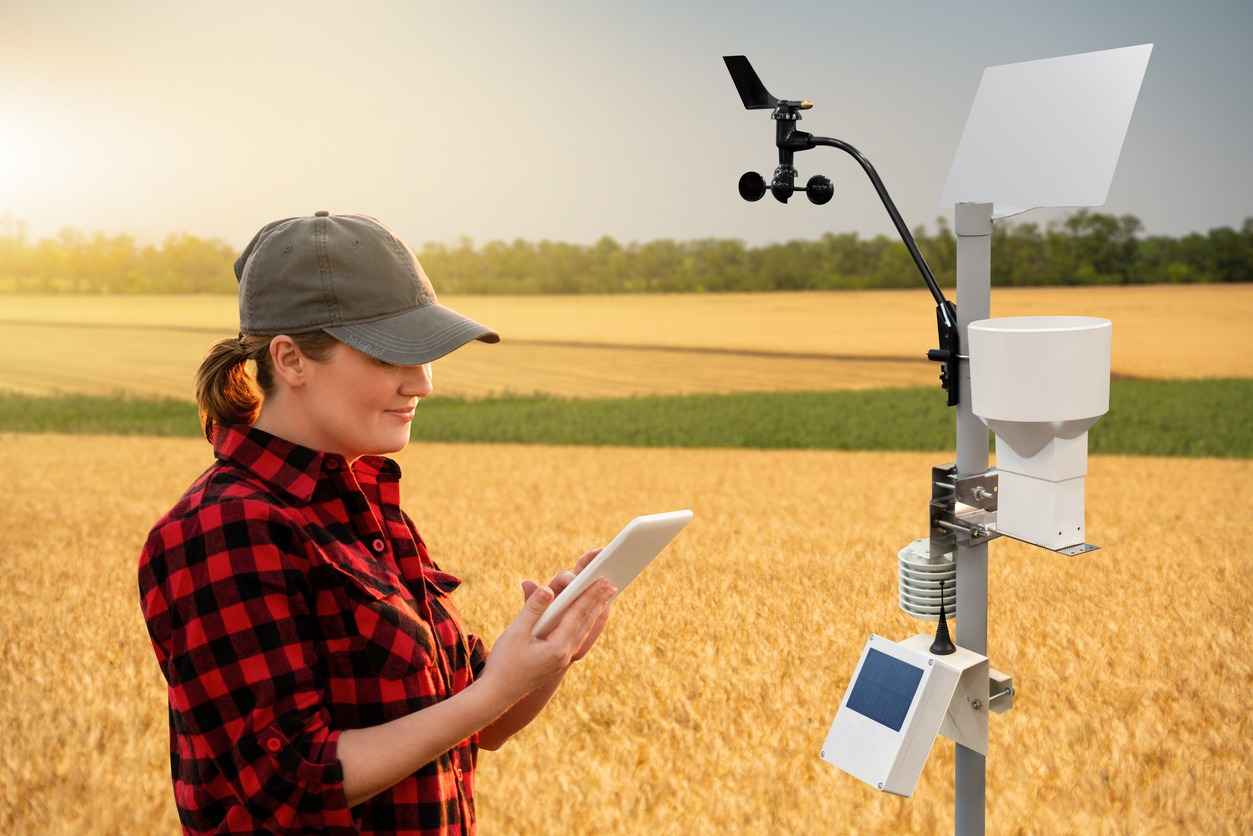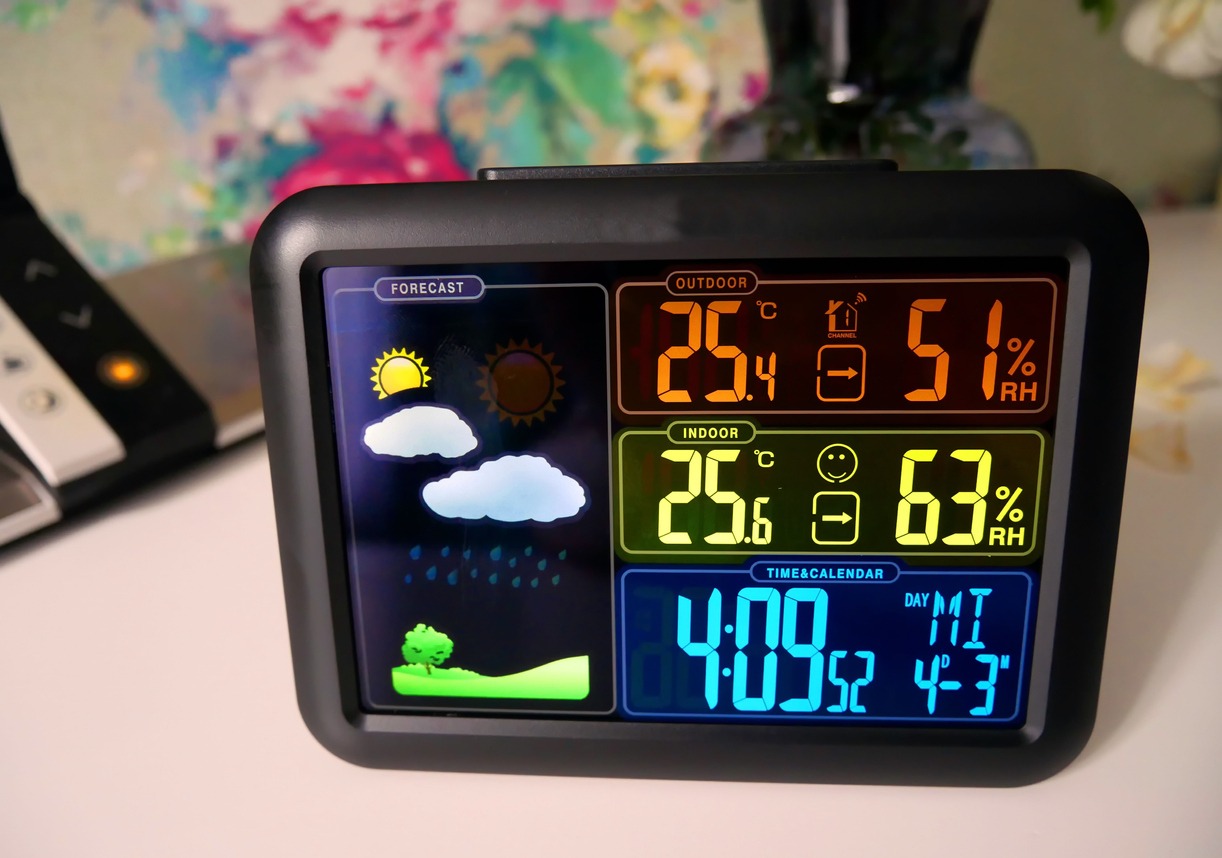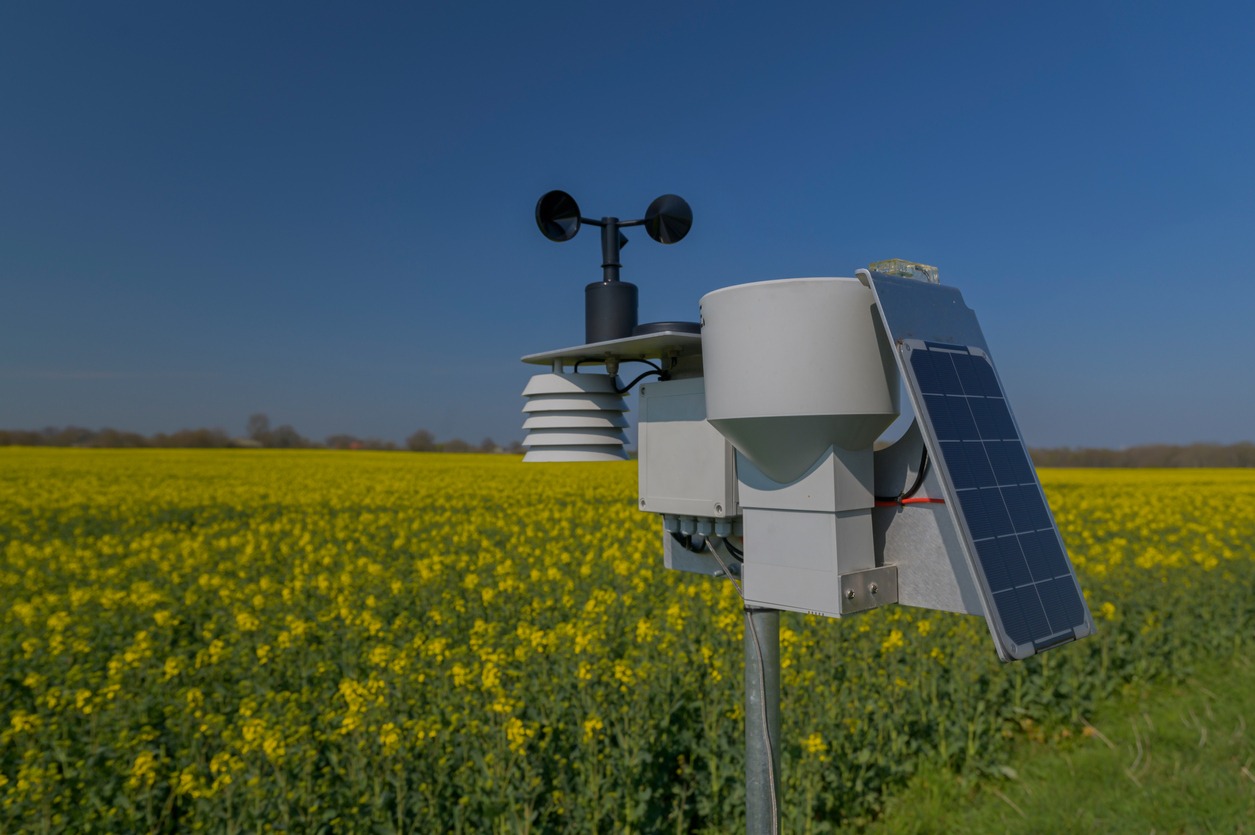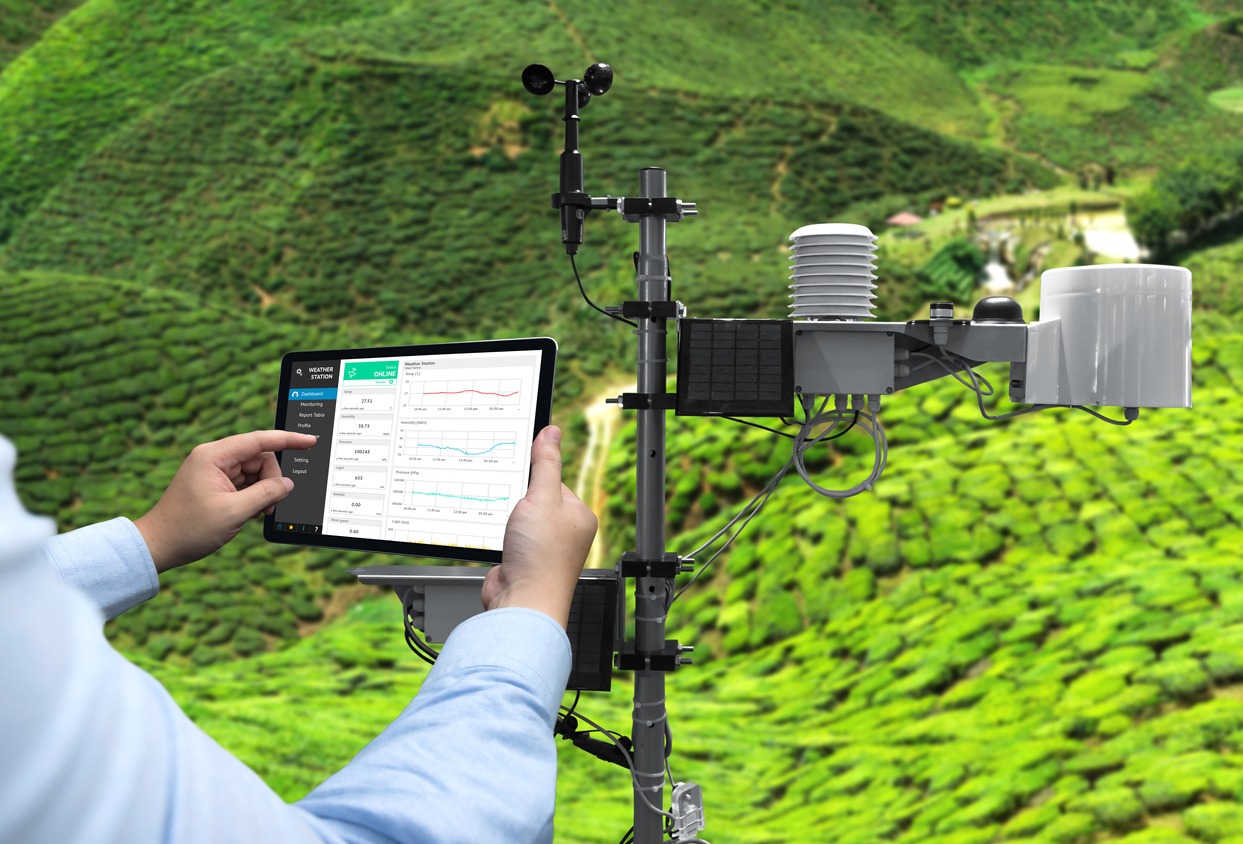A number of different lines of work hinge on accurate weather forecasting. Gardening, farming, golfing, sailing, flying, travel, research or generally any job (or perhaps even a hobby, if you’re a weather geek) that requires access to information like wind speed, wind direction, rainfall, humidity, immediate local temperature firmly fall into that category.
You might think that it’s fine to simply rely on local weather reports. Right? Well, not quite. Local weather reports are limited to the locale the monitoring equipment is set up in, making them unreliable and inaccurate for some cases (think of when it’s raining outside and the weather report says it’ll be sunny all day). If your line of work or your valued hobby is greatly influenced by the weather in your specific area, you’d have to look for options other than mainstream radio, television, or social media. One of the solutions to getting hyperlocal weather forecasts is setting up your very own weather station.
What Are Personal Weather Stations?
During the 1800s and 1900s, personal weather stations did exist. However, they usually consisted of some analog tools that measured certain factors to help predict the weather within a short period of time. For instance, there would be humidity gauges to measure how much moisture content your surrounding air had. Other tools included barometers and rain gauges for helping to observe previous rainfall and predict future downpours. With these tools, one could put together a trend that might predict future weather with some degree of accuracy.
What are personal weather stations like today?
Personal weather stations have now evolved to become increasingly sophisticated and convenient to use. You can pick the most suitable choice from a wealth of options, ranging from a basic desktop station to a wireless weather station and everything in between.
How to Buy the Best Personal Weather Station
In the paragraphs that follow, we’ll explore similar key factors that need your consideration before you take the plunge and buy a personal weather station. We’ll conclude with a handy rundown of some of the best systems available in the market to save you wading through the rough stones to find the gems.
Here are a few factors to consider when you’re buying a personal weather station:
Price range
Depending on what you intend to use it for, a personal weather station can run you to $150-$2500. More often than not, you’ll find stations featuring sensor arrangements and an accompanying console that displays the detected weather variables. The additional features will add on to the price, but you may also be able to get a good package deal with certain options.
High durability and sturdiness
Another factor universal to a good station is durability. You’d want your weather station to be reliable which means it should be able to take a beating from the weather and still keep forecasting accurately.
For most situations, your weather station will reside outside your house and you’d want it to keep working like it is supposed to–whether it’s scorching or raining outside. To make them sturdier, most machines come with a covering that saves them from foul weather and rust. If the model is a portable one, you might want to bring it indoors during rain and extreme temperatures (provided that you don’t need to collect data during these times).
The kind of data you need
First things first, you need to decide on the data you’ll be collecting. If you don’t require advanced data types such as UV measurements, wind speed, or precipitation data, a simple weather station that accounts for air pressure, temperature, and humidity should do the job. You’d want to pick an interface that is user intuitive. More often than not, your station will feed its reports to a computer interface where they can be viewed, saved, and shared online.
Multiple or Single Sensors
All personal weather stations are now equipped with wireless sensors, which means that they can easily read temperatures, wind speeds, and rain gauges without much hassle.
Size
Next up, you have to decide the required dimensions of the station and the space it’ll be occupying. If you often find yourself hiking or camping, a portable station that can be carried with you would be a good bet. However, if you’re only interested in receiving reports while you’re home, a basic stationary model would be perfect.
Connection type and the resulting range
In the same vein, you’ll have to pick between wired or wireless options. Wireless stations relay their reports over Wi-Fi hotspots, while wired ones connect to your computer via a USB connection. As a rule of thumb, if ease of setup is a priority, wireless weather stations are a safe bet.
If you go with a wireless setup, you’ll need to consider its range as well. The range is essentially the distance between your computer and your station and it’s often affected by the obstacles the signal encounters while making its way to your computer.
Accuracy
Speaking of accurate readings; if you want precision, a weather station that reports the variables in increments of 0.5 is the way to go but if you won’t be using it for commercial purposes, a low-end station with 1.0 increments should suffice.
Power sources and backup
Last but not least, factor in the source that supplies the station with power. Weather stations are commonly powered by solar power, batteries, or just plain AC current from an outlet. Solar-powered stations tend to be more convenient because you don’t have to swap out used batteries for fresh ones every now and then. However, if your station is battery-operated, it should at least have a battery life of 200 hours.
In order to have a more consistent and worry-free experience with portable weather stations, you may want to get the very best batteries on the market. For the most useful options, make sure to check out the best batteries to stockpile for prepping. Once you know the characteristics to look for, you can simply read the online reviews and plan an order for the most likely battery that fits the bill.
Upgrade and expandability
When purchasing your home weather station, ask the store representative whether that model could be upgraded for a fraction of the price in the future. If the answer is ‘yes’, you might be looking at your final choice! If and when affordable, you should be able to add more sensors to the model when needed.
Inbuilt warnings
The more high-end weather stations include programmable warnings in their devices. These stations will measure things such as wind speed, temperature, etc. We can also customize the alerts, such as setting an alert for if and when the temperature goes to freezing temperatures outside. By getting informed like this, we can make wiser decisions while traveling or staying at home/
Availability on mobile apps
The latest kinds of weather stations have made mobile apps. Anyone who downloads these can also use some of the apps to monitor their own personal weather station at home or wherever its location is.
Who can Benefit from a Weather Station?
We’ve already touched upon the various reasons why a person may need a personal weather station. It’s not that unusual to need a device like this, especially if one’s livelihood depends upon it. Let’s now have a closer look at the various situations in which a personal weather station might come in handy:
Maintaining a garden
If you have a garden to maintain, you need to be aware of changing weather conditions so you can care for your plants better. If you know the prevailing weather variables, you can safeguard your plants against the coming frost and wind damage. Knowing about the humidity levels in your immediate area will also help you figure out when to water certain plants.
Living off the grid
There’s increasing interest in living off the grid these days, with several people choosing to shun urban life and choose a more nature-based way of living. This lifestyle choice may include tiny homes, alternative energy sources such as solar panels, farming, preserving food for the winter, and so on.
With choices like these, one gets to be quite dependent on the weather for several aspects of life. Coming rain might affect their crops; sudden winds might ruin their outdoor projects, and extreme temperatures might mean extra prepping in advance. This is why a personal weather station should also be counted as the guide to the items you need to live off the grid.
Fending off persistent growths of mold and bacteria in the home/workspace
Further, a personal weather station feeding you accurate humidity information can help in avoiding mold and bacterial growth inside your home. Higher humidity levels almost always promote mold growth. With knowledge like this, you can take steps to effectively reduce the humidity levels in the air and remove mold that has already set in.
Preparing for all events
Another benefit that personalized weather stations offer to homeowners is the ability to prepare for the worst. And that doesn’t just mean dressing for the weather that particular day–although that is important as well. It also means that a weather station will alert you if there is a storm expected in your locale or if there’s a fire nearby and you need to track the direction of the wind. In case something serious occurs, here’s a guide to selecting items you need at home for emergency situations.
Final Thoughts
To conclude, a personalized weather station can be a great tool if you need to keep an eye on prevailing weather conditions but you don’t find local weather reports reliable enough. Most low-grade weather stations get the job done and they won’t break the bank. In any case, a personal weather station is a smart investment. They’re easy to set up, use, and maintain and they can help you prepare and stay one step ahead of foul weather.



